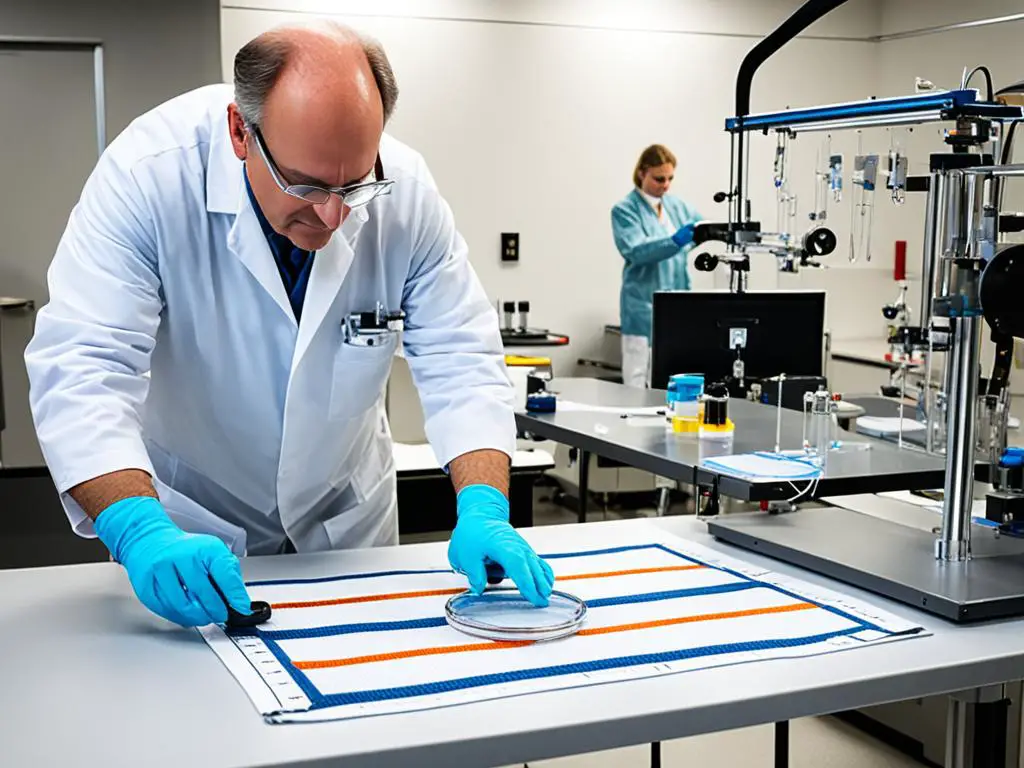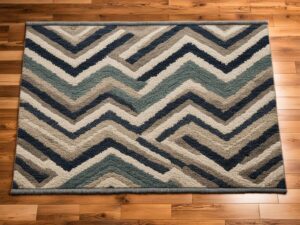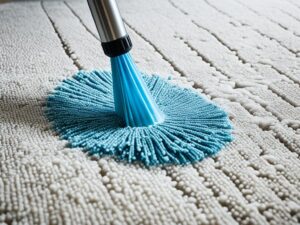Polypropylene rugs have gained popularity in home decor due to their practicality, affordability, and durability. Many homeowners wonder about the safety of using polypropylene rugs, especially in households with children and pets. In this article, we will explore the safety aspects of polypropylene rugs and debunk common myths surrounding their use.
Key Takeaways:
- Polypropylene rugs are safe for household use and do not pose any health risks.
- They are made from a synthetic material called polypropylene, which is commonly found in food packaging.
- Polypropylene rugs have low environmental impact compared to natural fiber rugs.
- They are stain-resistant, durable, and come in a wide range of colors and designs.
- When choosing a rug, consider personal preferences and circumstances to make an informed decision.
Addressing Common Myths about Polypropylene Rugs
Many myths surround polypropylene rugs, often stemming from the belief that synthetic materials are inferior to natural materials. However, scientific advancements have allowed synthetic materials like polypropylene to mimic the look and feel of natural materials without the high price tag. These myths include concerns about toxicity, eco-friendliness, and low quality. It is important to approach polypropylene rugs with an open mind and understand their unique benefits.
Debunking Toxicity Concerns
One common myth about polypropylene rugs is that they are toxic and can emit harmful chemicals into the air. However, this is not true. Polypropylene rugs are made from a non-toxic material that is safe for use in the home. They do not release any toxic fumes or volatile organic compounds (VOCs). In fact, polypropylene is commonly used in food packaging, further indicating its safety.
Additionally, polypropylene rugs undergo rigorous testing and comply with safety regulations set by the United States government. These regulations ensure that polypropylene rugs meet strict standards for indoor air quality, making them a safe choice for your home.
Eco-Friendliness of Polypropylene Rugs
Another myth surrounding polypropylene rugs is their eco-friendliness. While it is true that polypropylene is a synthetic material, it offers several eco-friendly benefits. The production of polypropylene rugs requires fewer resources, such as water and energy, compared to natural fiber rugs. This reduced environmental impact makes polypropylene rugs a more sustainable choice.
Furthermore, polypropylene rugs do not require chemical treatments for pest or disease control, reducing the use of harmful pesticides. This makes them a healthier option for both your home and the environment. Additionally, polypropylene rugs can be recycled at the end of their lifespan, further minimizing waste and contributing to a circular economy.
Quality and Durability of Polypropylene Rugs
One of the most common misconceptions about polypropylene rugs is that they are low-quality and lack durability. However, this is far from the truth. Polypropylene rugs are designed to be highly durable and resistant to stains, making them perfect for high-traffic areas and households with children and pets. They are also fade-resistant, ensuring that your rug will maintain its vibrant colors over time.
Beyond durability, polypropylene rugs offer a wide range of styles and designs to suit any interior decor. Whether you prefer a traditional or modern look, there is a polypropylene rug available to complement your space. With their affordable price point and long-lasting performance, polypropylene rugs are an excellent choice for those seeking both quality and value.
“Polypropylene rugs are a versatile option that combines affordability, durability, and style. Don’t let the myths fool you – these rugs are the real deal!”
By debunking these common myths about polypropylene rugs, it becomes clear that they are a safe, eco-friendly, and high-quality choice for your home. Understanding the facts behind these misconceptions allows you to make an informed decision when selecting a rug for your space.
Myth Debunked: Polypropylene Rugs Are Not Toxic
Polypropylene rugs have been the subject of misinformation regarding their safety and potential health risks. Contrary to popular belief, polypropylene rugs are not toxic and are approved for consumer use by the United States government.
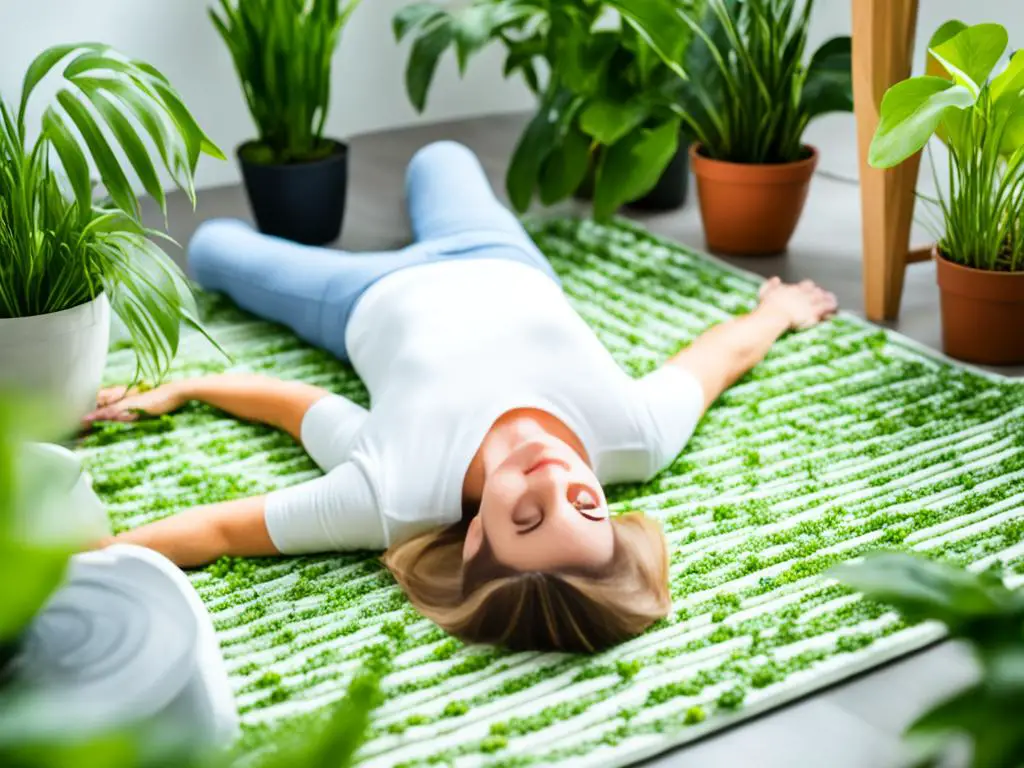
Polypropylene is a type of plastic that is considered safer compared to other plastics. In fact, it is commonly used in food packaging. The material itself is not harmful and does not release toxic chemicals into the air or pose any significant health risks when used as a rug material.
One key advantage of polypropylene rugs is their durability. They are designed to withstand heavy foot traffic and are resistant to stains, making them an excellent choice for households with children and pets.
Furthermore, polypropylene rugs are an affordable option compared to rugs made from natural fibers such as wool or silk. This makes them accessible to a wider range of consumers who are looking for quality rugs without breaking the bank.
The Environmental Protection Agency (EPA) has also recognized the environmental benefits of polypropylene. It is considered better for the environment compared to other plastics and has a lower carbon footprint.
In conclusion, the myth that polypropylene rugs are toxic and pose health risks is unfounded. They are safe, durable, and affordable, making them a popular choice for many households.
Myth Debunked: Polypropylene Rugs Are Eco-Friendly
Polypropylene rugs have often been criticized for their perceived lack of eco-friendliness. However, a closer examination of their entire life cycle reveals that these rugs can actually be considered environmentally conscious choices.
When compared to natural fiber rugs, polypropylene rugs have a lower environmental impact in terms of energy and water usage during production. The manufacturing process of polypropylene rugs requires fewer resources, making them a more sustainable option.
Furthermore, polypropylene rugs do not necessitate the use of chemical treatments for pest or disease control. This means that fewer harmful substances are released into the environment during the production and use of these rugs.
Another factor that contributes to the eco-friendliness of polypropylene rugs is their recyclability. At the end of their lifespan, these rugs can be recycled to create new products, reducing waste and minimizing their overall environmental impact.
It is important to note that while polypropylene rugs may not be as environmentally friendly as some natural fiber options, they still offer advantages over other synthetic materials. By opting for polypropylene rugs, consumers can make a conscious choice to reduce their environmental footprint without compromising on style or durability.
Myth Debunked: Polypropylene Rugs Are Not Low-Quality
Polypropylene rugs may not be as luxurious as high-end silk or wool rugs, but they offer their own set of advantages. They are more affordable, durable, and resistant to fading compared to their counterparts. Polypropylene rugs are known for their exceptional durability and easy maintenance. Although they may not possess the lavishness of premium-grade carpets, they are available in a comprehensive assortment of colors and patterns and can complement any interior design style.
Exceptional Durability and Longevity
Polypropylene rugs are highly durable, making them an excellent choice for high-traffic areas in homes or offices. The synthetic fibers of polypropylene rugs are inherently resilient and can withstand heavy use without showing signs of wear and tear. Unlike natural fiber rugs that may be prone to unraveling or fraying, polypropylene rugs maintain their shape and integrity over time.
Easy Maintenance and Stain Resistance
Maintenance is a breeze with polypropylene rugs. Their stain-resistant properties make them a practical option for households with pets or young children. Spills and accidents can simply be wiped clean with a damp cloth or easily lifted with carpet cleaners specifically formulated for polypropylene rugs. This ease of maintenance ensures that polypropylene rugs retain their appearance and quality for an extended period.
A Wide Variety of Styles and Colors
Polypropylene rugs are available in an extensive range of colors, patterns, and designs. Whether you prefer vibrant and bold hues or subtle and neutral tones, there is a polypropylene rug to suit your aesthetic preferences. From contemporary geometric patterns to traditional floral motifs, the versatility of polypropylene rugs allows them to effortlessly enhance any room’s décor.
“Polypropylene rugs may not be as high-end as silk or wool rugs, but they offer durability, easy maintenance, and a wide range of styles and colors.”
Resistant to Fading and Sunlight Damage
Polypropylene rugs are fade-resistant, thanks to their synthetic fibers that are less susceptible to the damaging effects of sunlight. This quality makes them ideal for areas exposed to direct sunlight, such as rooms with large windows or outdoor spaces. Unlike natural fiber rugs that may lose their vibrancy over time, polypropylene rugs retain their color intensity, ensuring long-lasting beauty and visual appeal.
While polypropylene rugs may not possess the same level of opulence as high-end silk or wool rugs, they offer unmatched durability, easy maintenance, and a vast array of design options. Their affordability and resistance to fading make them a practical and stylish choice for households seeking a balance between quality and budget.
“`html
| Advantages | Disadvantages |
|---|---|
| More affordable compared to silk or wool rugs | Not as luxurious as high-end rugs |
| Durable and resistant to wear and tear | May lack the softness and plushness of natural fibers |
| Stain-resistant and easy to clean | May emit a faint odor when new |
| Wide variety of styles and colors | May be prone to static electricity |
| Fade-resistant, suitable for areas with direct sunlight | Less likely to retain heat compared to natural fiber rugs |
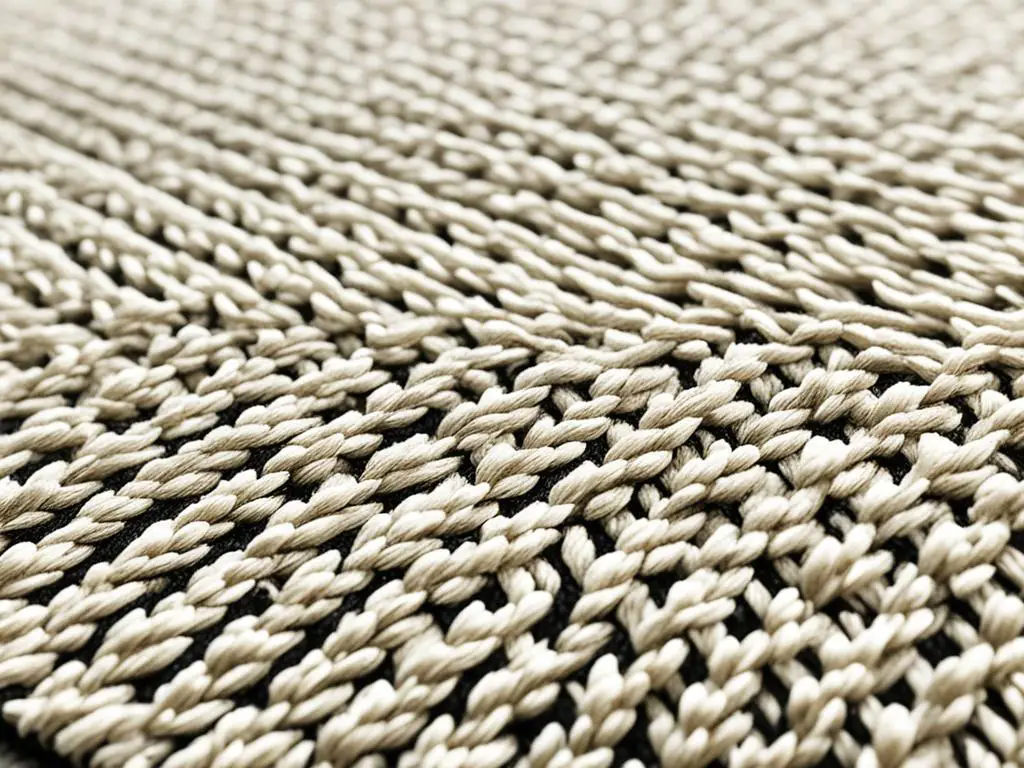
Choosing the Right Rug: Consider Your Preferences and Circumstances
When it comes to selecting the perfect rug for your space, there are several factors to consider. It’s important to take into account your personal preferences, budget, and the specific circumstances in which the rug will be used. Two popular types of rugs to compare are polypropylene rugs and wool rugs.
Polypropylene Rugs vs. Wool Rugs
Polypropylene rugs offer a durable and affordable option. They are known for their resistance to stains and fading, making them a practical choice for high-traffic areas and households with children or pets. These rugs are also available in a wide range of colors and patterns, allowing you to find the perfect match for your decor.
On the other hand, wool rugs provide a luxurious softness and timeless elegance. They are naturally insulating and can add warmth to any room. Wool rugs require more maintenance compared to polypropylene rugs, as they may need regular vacuuming and occasional professional cleaning. Additionally, wool rugs tend to come with a higher price tag.
Consider the key differences between polypropylene and wool rugs to determine which one best fits your needs and preferences.
Factors to Consider When Choosing a Rug
- Budget: Determine your budget to help narrow down your options. Polypropylene rugs generally offer more affordability compared to wool rugs.
- Durability: Assess the level of traffic in the area where the rug will be placed. Polypropylene rugs tend to be more durable and resistant to wear and tear.
- Maintenance: Consider the amount of care and maintenance you are willing to invest in your rug. Polypropylene rugs require minimal maintenance, while wool rugs need more attention to retain their beauty.
- Style and Design: Take into account your personal taste and the existing decor of your space. Both polypropylene and wool rugs come in various designs and patterns.
- Comfort: If softness and underfoot comfort are important to you, wool rugs are an excellent choice.
Remember, your rug choice should be based on a combination of your preferences and the specific circumstances in your home. Don’t hesitate to explore different options and seek advice from rug experts to make an informed decision.
Polypropylene Rugs vs. Wool Rugs Comparison
| Factors | Polypropylene Rugs | Wool Rugs |
|---|---|---|
| Affordability | More affordable | Higher price range |
| Durability | Resistant to wear and tear | Less resistant to heavy foot traffic |
| Maintenance | Minimal maintenance required | Regular vacuuming and occasional professional cleaning |
| Style and Design | Wide range of colors and patterns | Luxurious and timeless designs |
| Comfort | Less soft compared to wool rugs | Soft and comfortable underfoot |
Take into account the information above and evaluate how each factor aligns with your preferences and circumstances to make an informed decision about the right rug for your space.
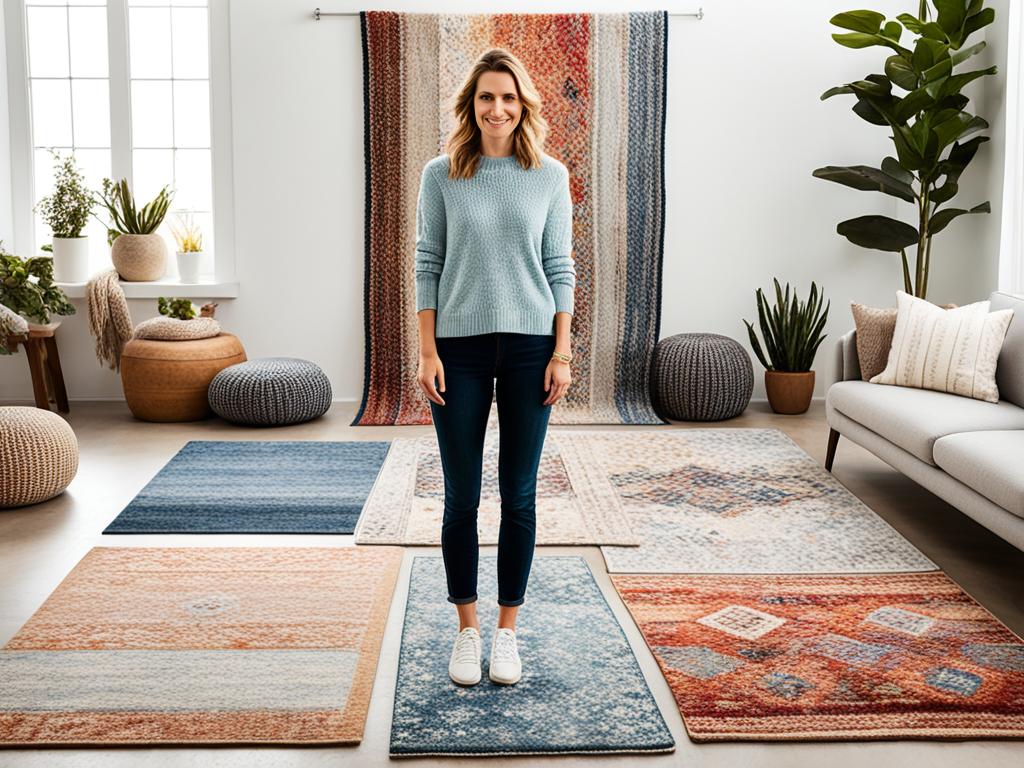
Conclusion
In conclusion, polypropylene rugs are an excellent choice for households seeking practicality, safety, and affordability. These rugs offer durability and are resistant to stains, making them ideal for busy environments, especially those with children and pets. By debunking common myths surrounding polypropylene rugs, such as concerns about toxicity and eco-friendliness, we can appreciate their unique benefits.
It is important to consider personal preferences and circumstances when selecting a rug. Whether you decide on a polypropylene rug or explore other options, making an informed decision is crucial. Remember to weigh the pros and cons, and carefully assess factors such as budget, maintenance requirements, and design preferences.
Ultimately, polypropylene rugs are a reliable and safe choice that can enhance any living space. With their affordability, durability, and stain-resistant properties, they provide a practical solution for both comfort and style. So, whether you’re looking to add a pop of color or create a cozy atmosphere, polypropylene rugs are definitely worth considering.
